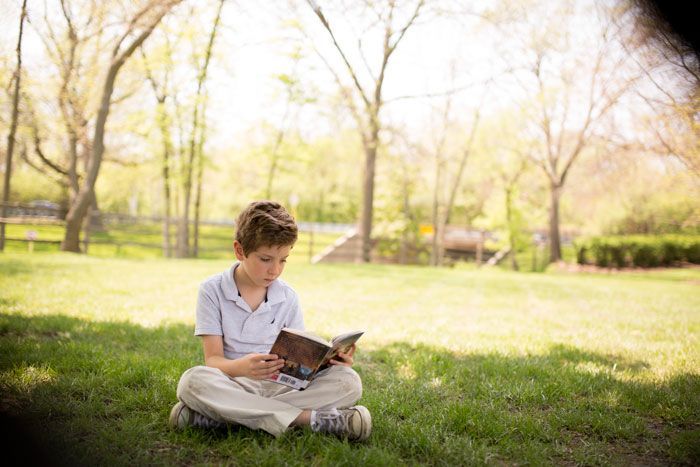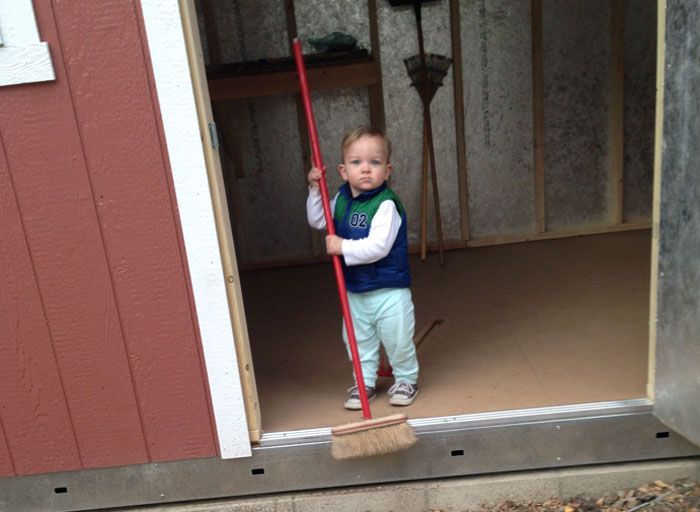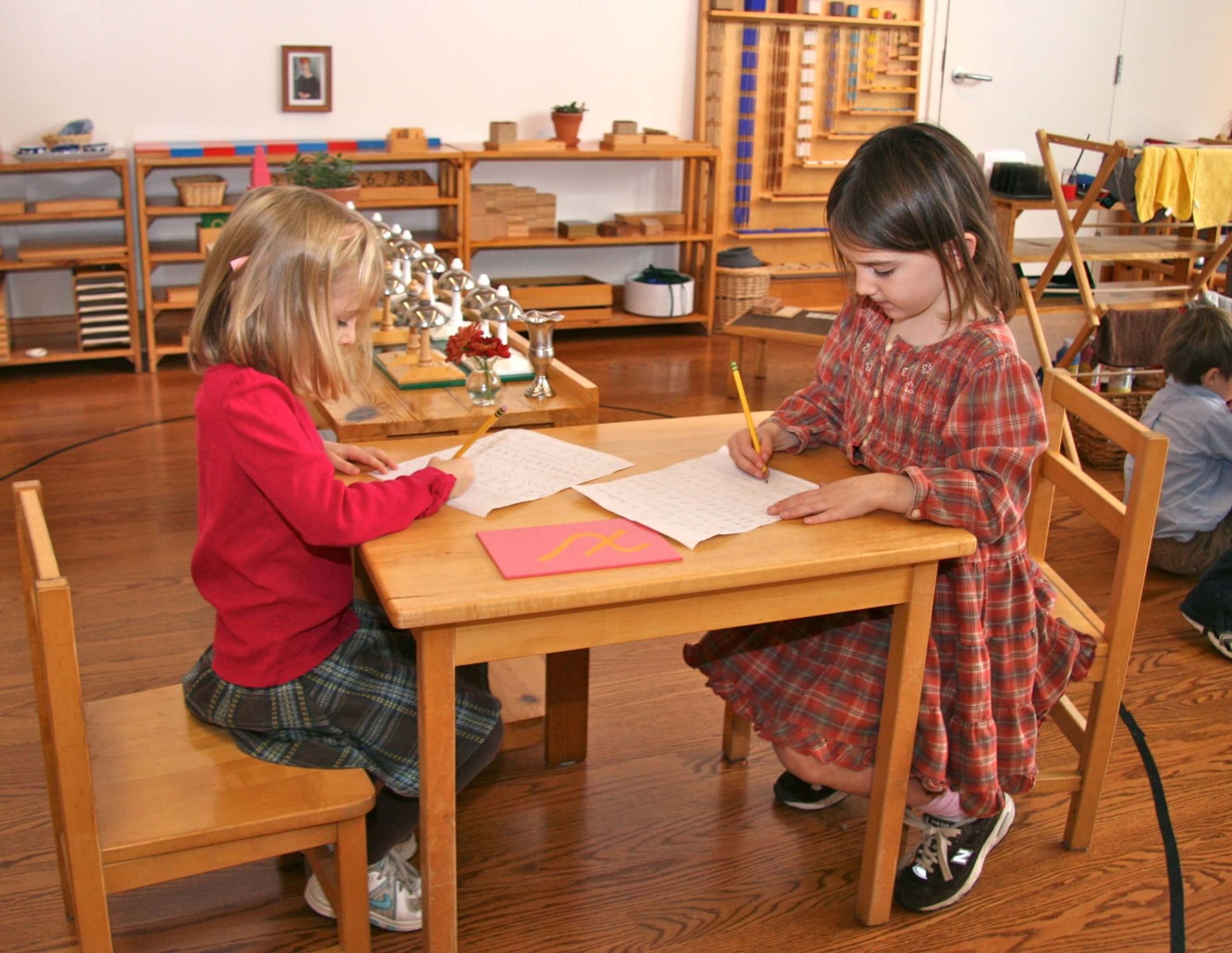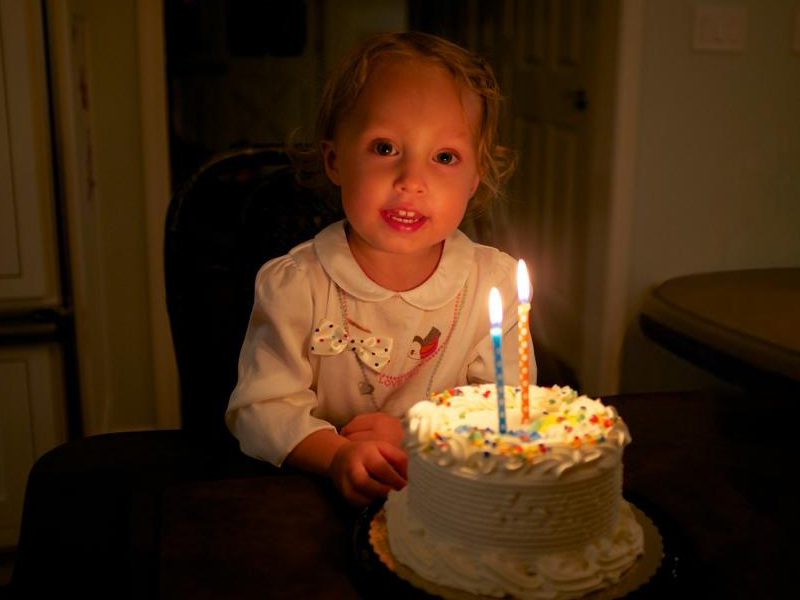
Reclaiming Summer
Ahh, summer! Isn’t this the time when we all slow down, sip lemonade in the shade with a novel lying across our laps, and watch our children play peacefully in the sand? It is the time to rejuvenate…Hmm, what happened to that reality? In contrast, we often find ourselves driving around town in a frenzy, dealing with sunscreen, little children who scream, packing to leave town, doing loads of laundry and dishes in an endless cycle. It is a shock, every year, how we barrel towards the 4th of July, then abruptly mourn that by mid-August this whole, big, wonderful thing called summer will have passed without feeling a sense of peace or rest, or reading as many books as we’d hoped. We are often left to wonder whether there are better summer activities for Montessori children.
You are a normal parent if any of this sounds familiar. And even if you love the chaos of being with your children all day and could care less for time to read, I will still emphasize that routine and purposeful activities for Montessori children will not only help you reclaim your summer, they will aid your children’s development in important ways as well.
Children need routine and a dependable schedule. While we thrive on spontaneity at times, children are in a very different stage of life and their needs are different from ours. They are in the building stage. Quite literally, they are forming themselves as people and they are forging pathways in their brains every day.
Summer Activities for Montessori Children
Intelligence can be defined as the result of this forming map a person has in his or her mind, built through experiences and exposure to the environment around them. To aid our children in this process of self-formation, we must first consider the environment they are surrounded by. This environment - your home - will best support your child by involving a simple schedule and routine, and by including useful summer activities for Montessori children. Here’s an example:
- Wake the children up around the same time each day, (basically). If they rise before dawn, establish that everyone stays in their bedrooms* until a certain consistent time.
- Prepare the kitchen for their arrival so that they can be as independent as possible in getting their breakfast. Put things out in a similar fashion and the same area of the kitchen each morning.
- Clean the kitchen up together and then embark- (maybe they are going to a camp if older or with you on an excursion if younger)- or have an activity time at home. I’ll elaborate on both of these below. A nap will be included in the morning time for infants.
- Have lunch around the same time each day.
- After lunch, have a “quiet time” no matter what the ages of your children. I highly recommend this in the summer when we are all much more physically active. Children can get burned out going all day long, and so can we!
- Then, in the mid-afternoon, there is time for another activity. This can include prepping the dinner meal so that things will be smoother and simpler when it comes time to actually cook it and put it on the table, around 5:00 or so.
- Early in the evening, bring the children in and eat dinner, have a bath or wash time, (it is important to look ourselves over for possible ticks, bug bites and scrapes from the day), and climb into beds with a book. Read aloud to the children and put them in bed.

Do this early enough that you get some down time with your spouse or alone. Many parents let their children stay “up” until 7:30 or later, and you may call me crazy, but ours were put to bed around 6:00 until they were about six years old! (In the summertime it was sometimes 7:00). It does not mean that the children have to fall asleep right away, or even stay on their beds, it just means that the house is shut down for the night. This is valuable time to process the images of the day, relax, think, draw, read, look at books, hum, play quietly alone and be peaceful. A bedroom can be a sanctuary, especially after an active day. Early evening is valuable time for everyone, including the adults who would like to talk with other adults after being with children all day. Summer is a marathon, not a sprint!
Within this basic structure, the activities that occur in what I’m calling “Activity time” fall into three categories: Practical Outings, Enjoyment Outings and Home Activities. These activities for Montessori children have purpose in the real world, and this means a great deal to children who are discovering their world every day and building themselves as thinking, creative, self-motivated individuals.
Practical Outings might involve grocery shopping for the family, doing some errands around town, going to a doctor or another appointment, or doing other things that you as adult need to do with your children tagging along. Involve your children as much as possible in what needs to be done: If they can walk, they walk. If they can search for a pepper in the produce aisle, send them on the mission.If they can push the cart or carry a bag, let them do these things. Even an eight-month-old can hold a piece of fruit while riding in a grocery cart, and enjoy exploring what it is. Including the children makes them feel good. Remember, they are not adults—they are building themselves every hour, so they want to do things that we see as chores. Children learn from the attitudes of adults around them to enjoy participating and serving others, or conversely, to prefer lethargy and being served. By nature, children are doers—so, give them something to do! They will feel more at peace in action and be more cooperative as a result.
Enjoyment Outings involve summer activities for Montessori children that are geared towards the children, such as going to spend time on the beach, going for a walk or a bike ride, a visit with friends, or to participate in a lesson of some kind. As with all outings, short and sweet is best. If you are rushing and stressed over tardiness or pleasing others, your child will absorb more about your mood than about the experience. So keep things simple and enjoy the moments as much as you can. Allow for the time it takes for the slow walk home after the event and the time it takes to get everyone down for their naps. Try to adopt a wandering, relaxed pace when it can apply. Keep expectations low and simple.
Home Activities are the experiences you provide around your house. These activities take planning and prepping from you initially, but pay off in spades. They involve a few simple props, a brief demonstration on how to use them and how to put them away, and some open time for the child to get into it. Home activities for Montessori children are very, very important, especially for the youngest children under age six. If you have young ones who are napping and you have to stay around the house, these are vital for your family.
But most importantly, it is through these practical life experiences that young children form themselves- these activities involve process, which give them clues in how to think, they require some coordinated movements which helps their brain and body find one another and coordinate in a meaningful manner to execute the thoughts of the brain, they present challenges naturally, which helps children navigate their emotions and develop perseverance and a normal level of effort. Furthermore, the objects and actions have names, which gives them opportunity to speak and ask questions and learn more words, thus embarking further on the quest for communicating their needs, desires, and thoughts, and finally, they involve some level of cooperation with other human beings, which is the path to intelligence and understanding their world.
These activities have purpose in real life. They feed the soul in a different way than playing with toys or painting, (also enjoyable and important for us in other ways), and they are things many adults do not think of involving children in, which is why I stress it here. You may have some simple art supply sets for your children, musical instruments, or baskets of toys or books around the house. But remember this valuable aspect of their lives: to be involved in the care for themselves and their home and family needs. These activities for Montessori children aid their development as people. (Playing creatively on one’s own or with other children is also important, but that is a topic we’ll explore in the next blog entry, “Something out of Nothing: Why Play is Not Wasted Time!”).
Examples of Home Activities for Montessori children:
- Food preparation: washing and/or chopping fruit or vegetables, spreading almond butter/soft cream cheese on crackers, removing leaves from strawberries, simple baking
- Cleaning: dishes, the floor, table tops, dusting, sweeping
- Gardening or arranging objects in the garage, on shelves, and so on.
For older children:
- Wash the car, clean bicycles, sweep walkways or decks, water plants or set up watering systems for the yard, filling bike tires, grocery shopping, cooking dinner, building or repairing something.
This is by no means a prescriptive list - Once you begin thinking about what needs to be done around your home, the possibilities are endless and will vary from one family to another.
One final note: When suggesting a routine above, I put the word “basically” behind the times of day for a reason: It is important that we adults keep our families in a routine that supports them, but rigidity leads to unnecessary distress. In Montessori From the Start, by Paula Polk Lillard and Lynn Lillard Jessen, the authors remind us to “soften” our expectations in our homes. This does not mean we do not have expectations, but that we remember we are mothers and fathers, not teachers, and this is a loving home first and foremost, not a school. Be gentle with yourself and your children.
Keep your summer lifestyle as simple as you can, stick to basic daily routines, and involve your children in activities and outings so that they can satisfy their needs to build themselves as active participants. For more details and discussion on doing this, please join us at the Morning Lecture Series at Forest Bluff School. The ideas for bringing routine and purpose into your family life at home stem from the guiding principles of the Montessori approach. I hope you will find that your children feel more settled in a routine and calm from being active with purpose, and that you find moments to simply read a book, ultimately reclaiming your summer and making it a rejuvenating time for your whole family.
*More about your children staying in their rooms in the early mornings: With a few toys, blocks and books, there is plenty to do in one’s own room to make this possible. If you do not have this expectation already, it is never too late to begin! This is part of showing our children that how we begin the day sets the stage for the day- a lifelong lesson in forming healthy morning habits, whatever they may be. If you feel hassled by a helter-skelter start to the day, imagine how the children feel. You are the wise one, so don’t allow them to dictate how and when the family’s day begins outside the bedrooms. If you are roused most mornings by your children, I urge you to make this change an immediate goal. An excellent book that explains the importance of routine in forming our healthy habits as adults is The Power of Habit, by Charles Duhigg, mentioned in our previous blog entry, Recommended Reading for Montessori Parents.


